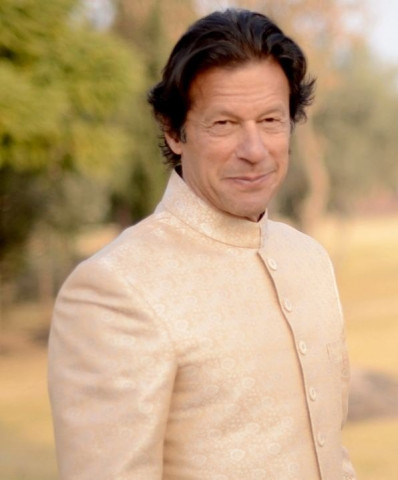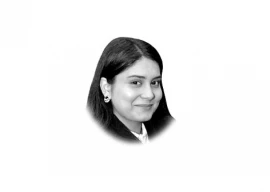
With the complex political landscape slowly unfurling itself like a well-worn Persian carpet, the game of numbers is also weaving itself into a pattern. If Imran and his lieutenants are studying this pattern with a microscope — as surely they are in the Bani Gala Ops Room — they would not have failed to detect the winding pathway to the Prime Minister’s House.
But before embarking on this pathway, Imran has added some caveats. In his latest interview to a news channel, Imran said in categorical and emphatic terms that post-election he will absolutely not make a coalition with: a) PML-N, b) PPP and c) JUI-F. With this statement factored in, let’s crunch some numbers.
To become the next prime minister, Imran has to have the support of 137 members out of the 272 directly elected seats in the National Assembly. So how does he reach this figure? A bit of reverse engineering will help. Having ruled out any alliance with the PML-N, the PPP and the JUI (which is now part of the Muttahida Majlis-e-Amal (MMA)), Imran has left himself an interesting array of options for coalition partners.
The partner with possibly the largest tally of seats may be the MQM. In the 2013 elections, the MQM bagged 19 seats in the National Assembly. It had the same number of seats in the 2008 elections too. With the fresh delimitation, Karachi has 21 National Assembly seats. Of these, as per reports from Karachi journalists, the MQM vote bank is rock solid on 12 seats. On another five seats, the MQM has an edge but will face a tough fight. From Hyderabad, the MQM will pick up two seats. If the MQM does fantastically well, it can bag 17 seats from Karachi and two from Hyderabad, bringing its total tally back to 19.
But which MQM?
Technically, there are five of them: MQM-London, MQM-Pakistan, MQM-Bahadurabad, MQM-Haqiqi and of course the Pak Sarzameen Party (PSP). The MQM-London is not expected to contest the elections, which leaves the other four to carve up and share the sizeable MQM vote bank. Will this vote be divided between the four just as the office-bearers of the original party have divided into these groups? Or will it stick with whichever of the four is considered by the voters as the true heir of the MQM? No one knows. And yet most believe the MQM voter will not go outside these choices. The voter may stay home if disillusioned but is not likely to vote in any significant numbers for any other party.
Here’s the other key observation by seasoned Karachi journalists: regardless of how these 19-odd seats are divided between various MQM factions, when it comes to coalition building post-elections, a gentle nudge from the Establishment will herd all 19 members together into a possible PTI coalition. So that’s 19 (give or take a few) seats in the PTI bag.
Turn now to Pir Pagara’s PML-Functional which won four National Assembly seats each in 2008 and 2013 elections. Pir Pagara is now part of an anti-PPP alliance in Sindh called the Grand Democratic Alliance (GDA), but it is no threat to the PPP’s domination of interior Sindh. Yet, the PML-F may win two to four seats of the National Assembly. These seats (assuming four) are likely to end up with the PTI coalition.
Remember the PML-Q? The one that ruled during the Musharraf years? In 2008, it bagged 38 seats in the National Assembly. The 2013 elections saw the party tumble down to two seats. And yet the party of the Chaudhries is still around. In this year’s elections it may again garner two or three seats and these will go in the PTI coalition kitty.
The Balochistan National Party (known by the suggestive acronym of BAP) is the latest political outfit successfully crafted by the establishment. Many electables from the province have made a beeline for the party and it is expected to win enough seats in the provincial assembly to elect its own chief minister. Balochistan has 16 seats for the National Assembly, and BAP candidates may win up to six seats. These too will be willingly added to the PTI coalition.
Independents are also sniffing at the wind. In the 2008 elections, independent candidates won 30 National Assembly seats while in 2013 their number dropped to 10. This year there is a greater focus on independents and their number could possibly be as high as 20. Post-election, most will either join the PTI if it seems likely to form the government, or throw in their lot with the coalition. In both cases, the PTI coalition will benefit from these 20 seats.
Here then is what the numbers add up to: 19 MQM + four (PML-F) + two (PML-Q) + six (BAP) + 20 (IND) = 51. For convenience we can round up the figure to 50 seats. So in order to reach the magic figure of 137, the PTI will need to win 87 seats (87+50=137).
But how will Imran win these seats?
The overwhelming majority of PTI’s seats will be from Khyber-Pakhtunkhwa (K-P) and Punjab. K-P now has 39 seats up for grabs for the National Assembly. In the 2013 elections, the PTI did remarkably well and picked up 18 seats from K-P as well as one from Islamabad (won by Asad Umar). Assuming the PTI wins 20 NA seats from K-P this year plus one each from Islamabad, Karachi and Balochistan, this will add up to 23 seats. If Imran requires a minimum of 87 PTI seats to become the PM, he will need to win (87-23=64) seats from Punjab.
Punjab has 141 seats for the National Assembly. Of these, 46 are from South Punjab and 95 from North and Central Punjab. With electables joining Imran from South Punjab, let’s assume the PTI can win 20 of the 46 seats from the south. This would mean the PTI will require 44 seats from the remaining 95 seats in Punjab.
Is the 64-seat haul from Punjab a tall order? Yes, if you consider that currently the PTI has six NA seats from Punjab. But no, if the PML-N is crippled by desertions in its home territory of Punjab and the PTI juggernaut triggers an avalanche of Punjabi voters wanting to overthrow the three-decade-long domination of the Sharifs.
That sherwani may be stitched and hanging in a Bani Gala closet, but Imran still has 137 wrinkles to iron.
Published in The Express Tribune, May 13th, 2018.
Like Opinion & Editorial on Facebook, follow @ETOpEd on Twitter to receive all updates on all our daily pieces.













COMMENTS
Comments are moderated and generally will be posted if they are on-topic and not abusive.
For more information, please see our Comments FAQ